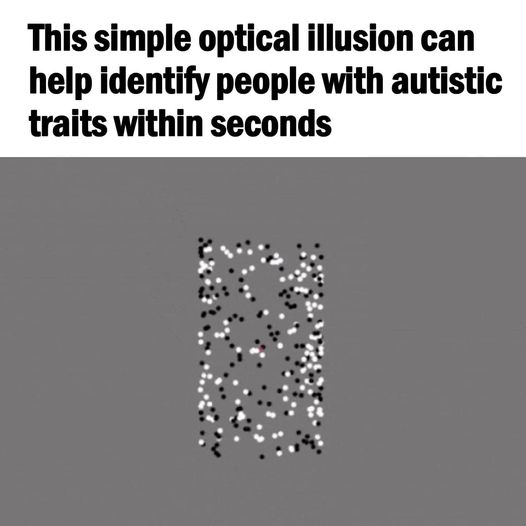In recent years, academics have investigated many approaches to better understand and diagnose Autism Spectrum Disorder (ASD). One such initiative is a unique visual illusion with the potential to shed light on the cognitive abnormalities associated with ASD. Scientists hope that by studying how people perceive the movement of black and white dots, they can gain insight into the detail-oriented thinking style that is common in people with autism.

Understanding Autism Spectrum Disorders (ASD)
ASD is a neurodevelopmental disease marked by impaired social communication and interaction, as well as confined and repetitive patterns of behavior, interests, or activities. Common ASD symptoms include difficulty socializing, restricted interests, repetitive activities, sensory sensitivity, and communication and language issues.
ASD symptoms often appear in the first two years of life, but some children may not be diagnosed with autism until later. According to the Centers for Disease Control and Prevention (CDC), approximately one in every 36 children in the United States had been diagnosed with ASD by 2020. Understanding the characteristics can lead to early diagnosis and improved patient treatment and outcomes.
The Importance of Attention to Detail

One distinguishing feature of people with ASD is their attention to detail and focus on specific parts rather than the larger context. This cognitive style often results in a propensity for routine, specialization in specific fields, and enhanced sensory perception. Understanding this trait in greater depth may provide useful insight into the underlying mechanisms of ASD.
Optical Illusion and Its Implications
The optical illusion being studied consists of black and white dots that might be viewed as two independent sheets moving in opposite directions or as a spinning column. This experiment allows researchers to compare perception and cognitive processes in people with and without ASD. If you see the dots as two separate sheets moving, it’s because you’re concentrating on one color and then the other. You identify them as unique features of unrelated scenes – a very detail-oriented perspective.
If you observe the illusion as a spinning column, you have a more inclusive perception and recognize it as a single system. One shade (most likely white) appears as the front of a dot moving across the face of a column before flipping over at the edge to reveal the second shade (black) on the inner surface. While you may be able to switch between both perspectives, people whose brains mirror the features linked with ASD will usually see it as two moving sheets. Again, if you interpret it that way, it does not necessarily imply that you have autism.
The Study
Researchers conducted a research on 50 individuals who did not have an ASD diagnosis. Rather than asking what they saw, the researchers focused on their eye movements. If they focused on the layers individually, their pupils would flicker as they adjusted to the two different hues of light. The researchers then had the subjects complete a questionnaire to determine the presence of other autism-related features and characteristics.
The findings suggest that people with ASD’s detail orientation extends to visual information processing. The optical illusion offers a new perspective on the cognitive abnormalities associated with the disorder. Beyond understanding the core causes of ASD, this research may help develop novel diagnostic tools and interventions.
The study of visual perception through optical illusions has provided intriguing insight into the cognitive processes connected with Autism Spectrum Disorder. By revealing the attention-to-detail characteristic, researchers have taken a step closer to understanding the disorder’s complexities. Further research in this area could pave the way for better diagnostic tools and targeted interventions, ultimately improving the lives of those on the autistic spectrum.





